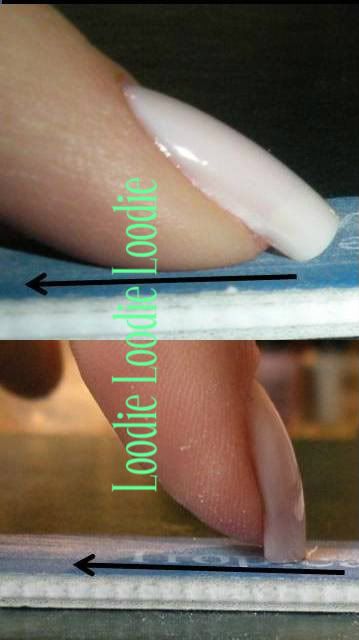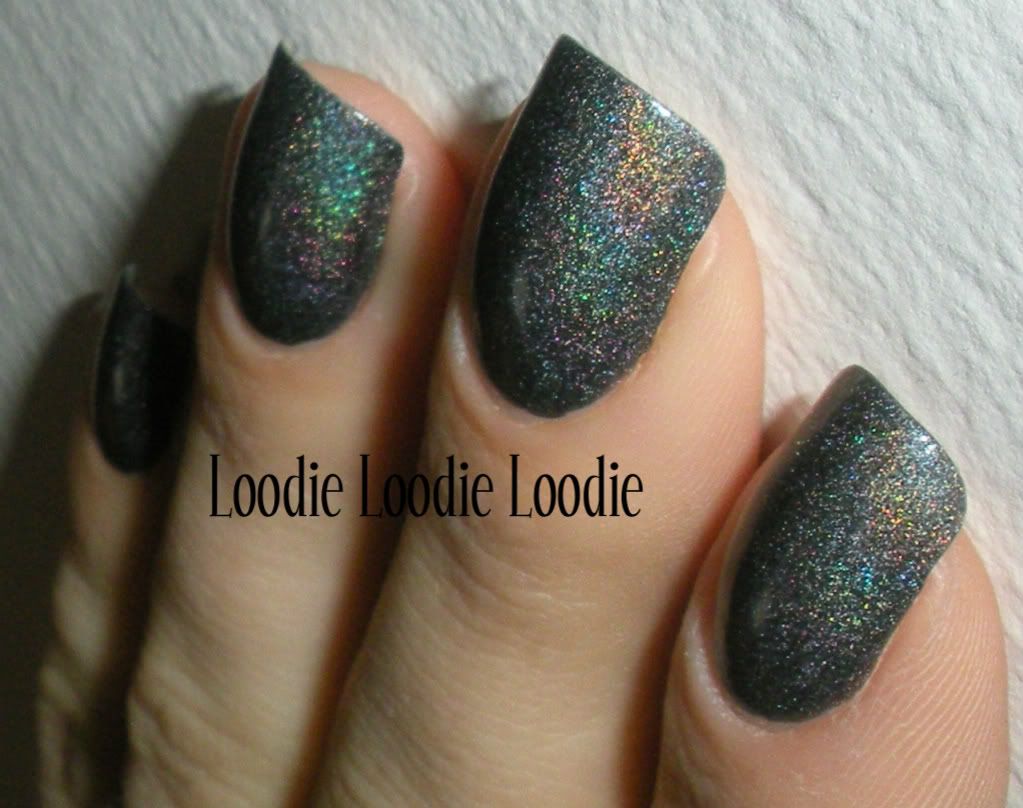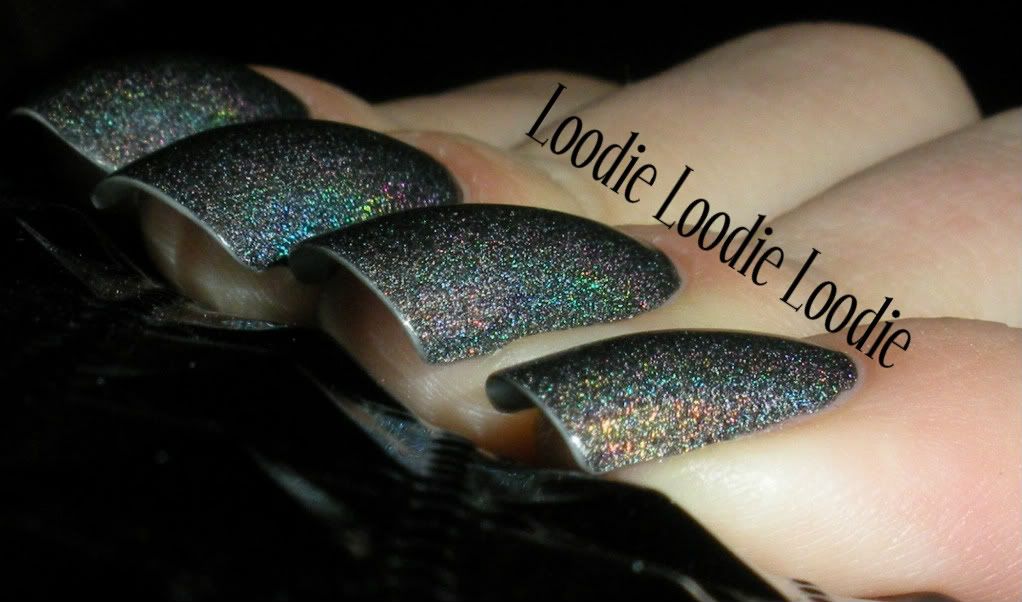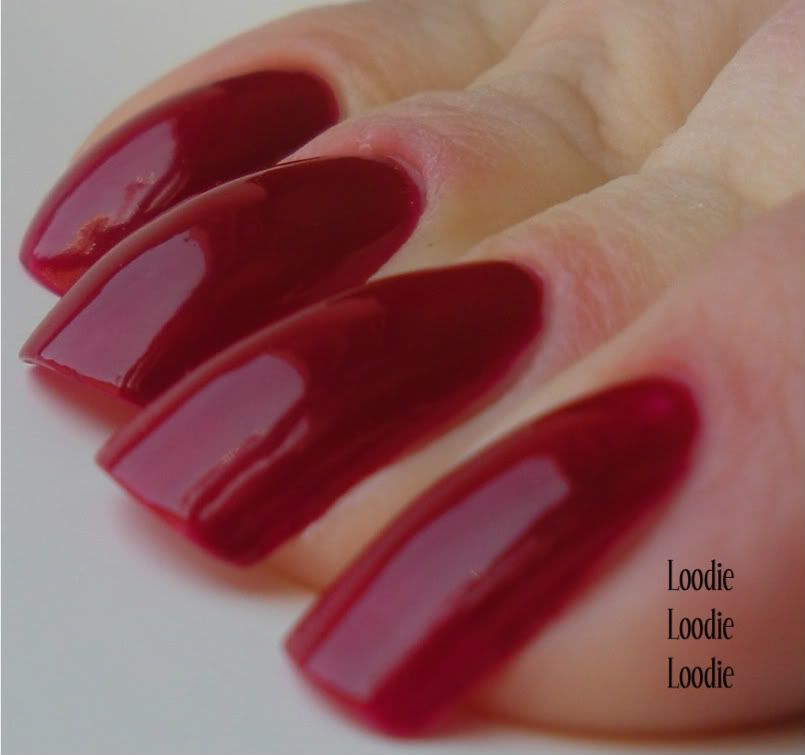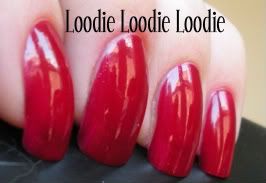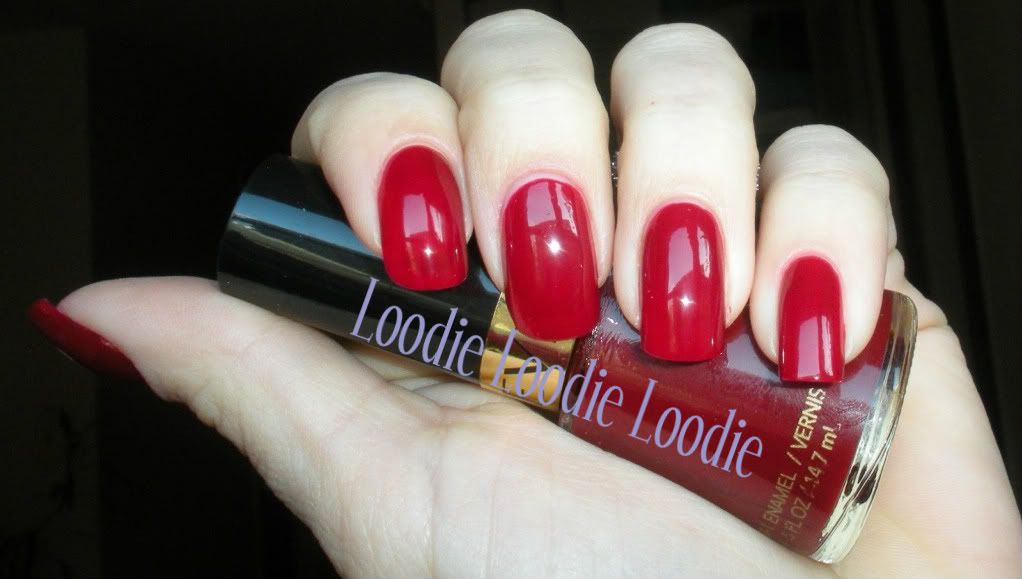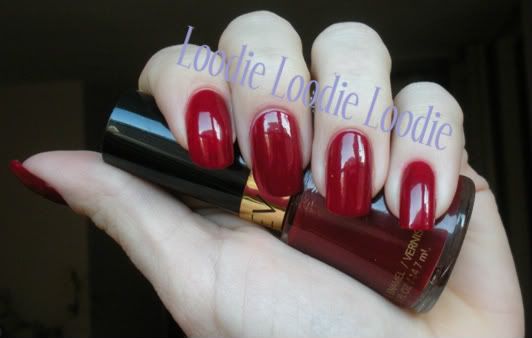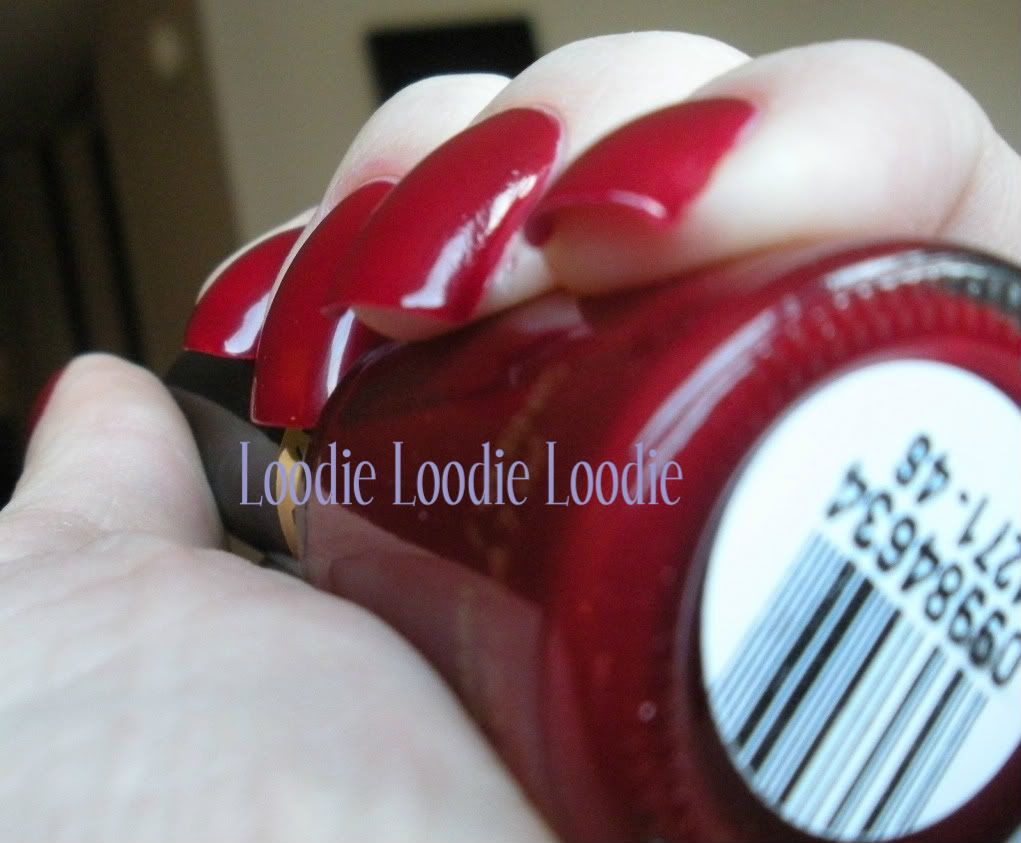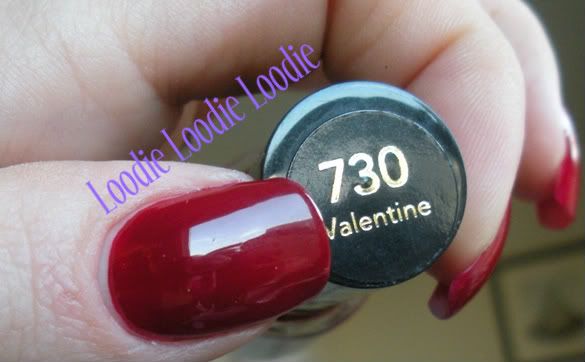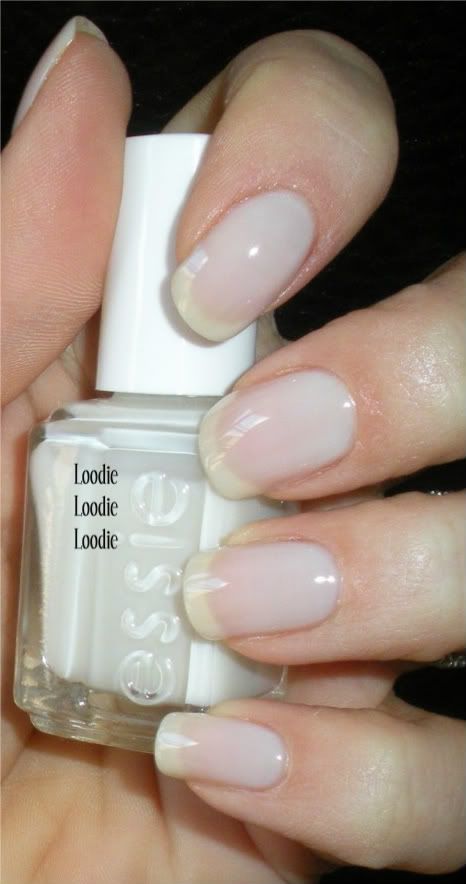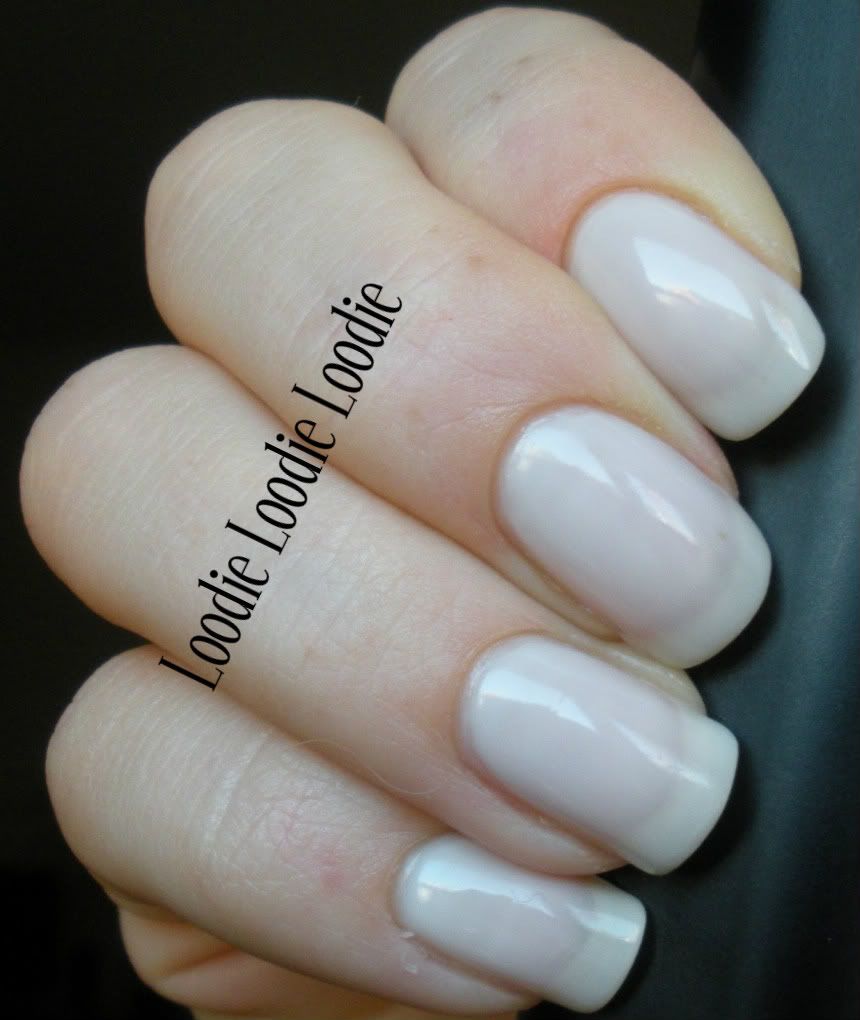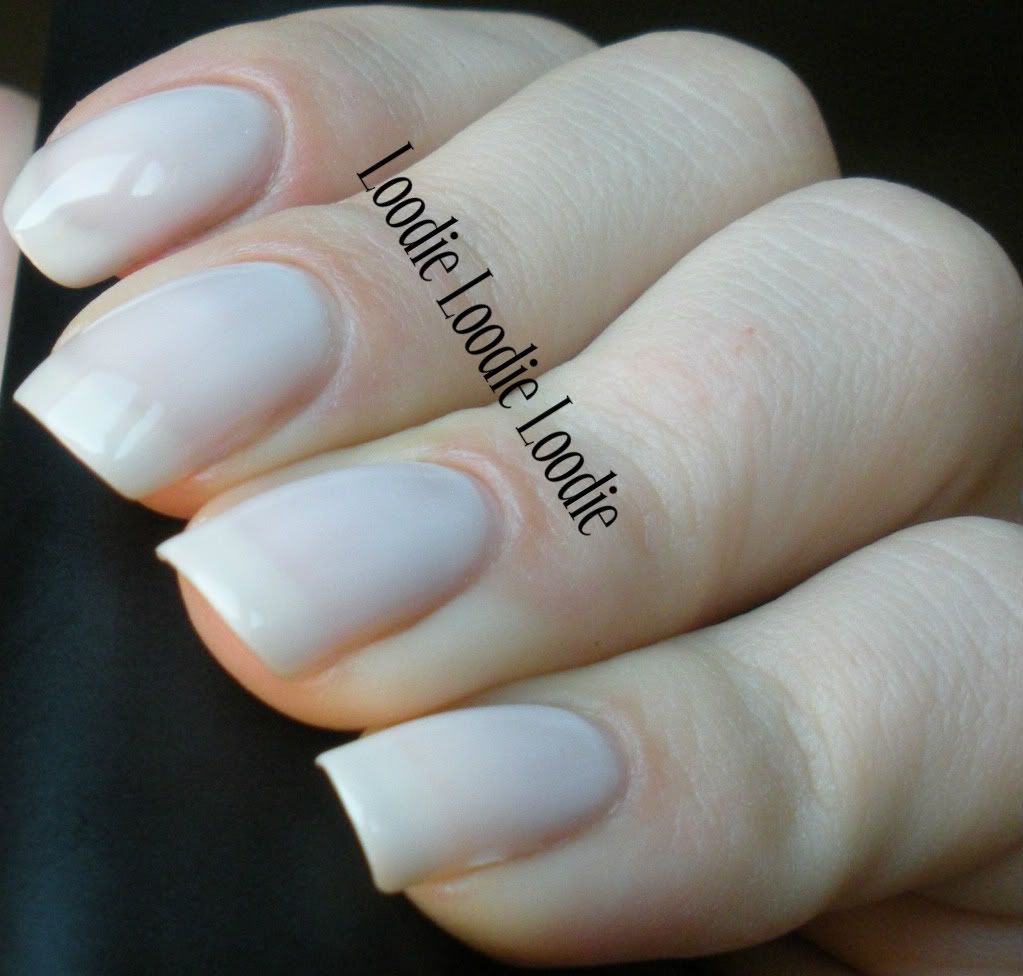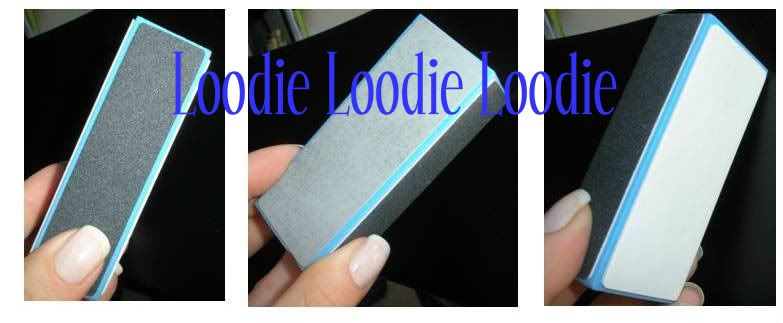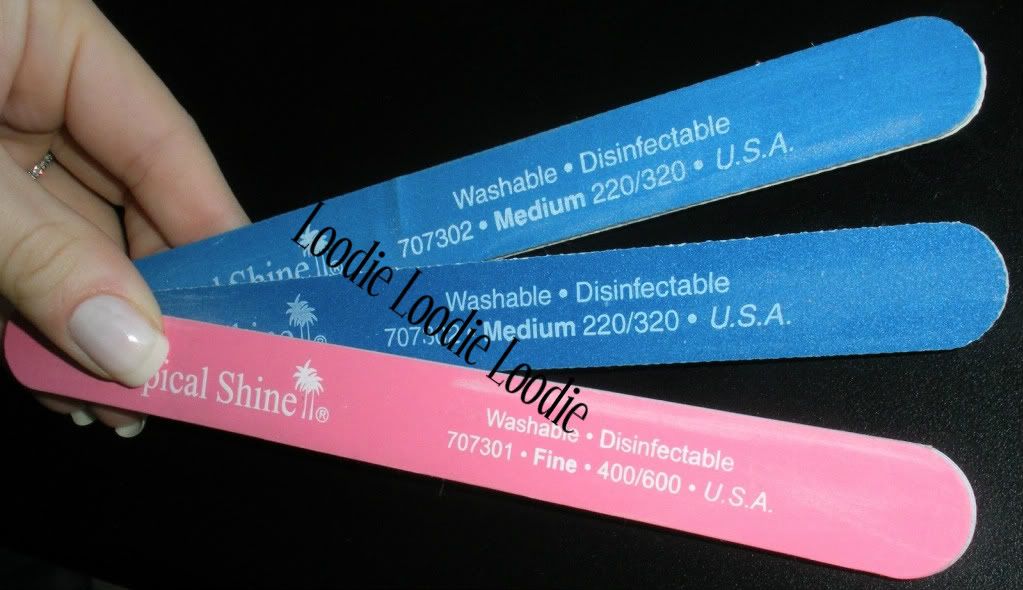Previously, I went over how to take down nail length and files, so you may want to visit those posts, there are some good tips. If you are not sure if square is right for you, the post on nail shape and balance may be helpful.
Nails with a high arching C-curve can easily achieve this nail shape and require the least amount of filing. If your C-curve is not as arched you may need more length or work on the side walls to achieve this look. I have to warn people, however, about messing with the side walls of their nail bed. I have found it is vital to nail strength so I discourage people from filing it, but if you must I have a few tips.
Before you begin you need a proper file. I already posted on what I prefer and why so I suggest you check it out before you read on. In general, a file with a grit strength of 320/400 will work for shaping.
Here is a before and after picture.
The before nail is some what squoval and we are going for a square nail shape.
I think this nail shape is the simplest for high arching C-curves because you only need to file straight across. Keep the file straight and steady in the horizontal direction (to the nail bed) until it is square enough to your liking.
I do have a few tips.
If you are filing in a horizontal direction, either sawing away with the proper grit file or in one direction, you will eventually end up with "nail shavings."
There may be shavings under the nail or on top as shown in the pictures. We need to eliminate them to have both a clean look as well as to help seal the nail plate.
To get rid of the "on top" nail shavings:
1. Start the file flush with the nail bed
2. In one sweeping motion, of down and around, move the file 270° around the nail tip.
To get rid of the "under" nail shavings:
1. Place the nail at either a 45° angle OR 90° angle to the file.
2. File down in one direction.
Either will work depending on how square you want it. The 45° angle will give you a softer square look, i.e. rounder edges.
Although these steps will help seal the nail plate, sealing is best done with the polish off and will be covered in another post.
Another way to soften the square shape is to take a finer grit file (320 or 400) and file from the corner to the center of the nail bed as shown in the pictures. You can see the nail looks slightly more round on the right. Now we are getting into the realm of squoval, and that will be another post.
Now a few words (and pictures) about filing the side walls of your nails beds.
If you are going to file the side walls, do not do it like this. Filing this way can injure the cuticle, skin and weaken the nail walls where a good bit of strength lies.
Here is a picture of one my nails. I used to have trouble with splitting and breaking right at the edge. The more I would file the side the more breaks I would get. The nail would crack before I could grow it very far from the free edge. Keeping that side wall intact (along with other things I will link here soon) eliminated that problem.
So is there a "safe" way to file the side wall?
If you must file, to even something out, make sure the file only hits the free edge and lies at least at a 45° angle to the nail side wall. Be very gentle and light handed. Use a high grit of at least 400 to be as gentle as possible. (Ignore that I have a 320 file pictured, its for demonstration purposes only.)
Video version of the square shape can be found here.
If you have any questions or comments please let me know.
Now I have to grow my nails a bit so I can show you Oval and then file back to Squoval!
Other posts about filing:
Files
Nail Shape and Balance
Taking down Nail Length
Oval Post and Video Post (to be linked)
Squoval
Sealing the nail plate




